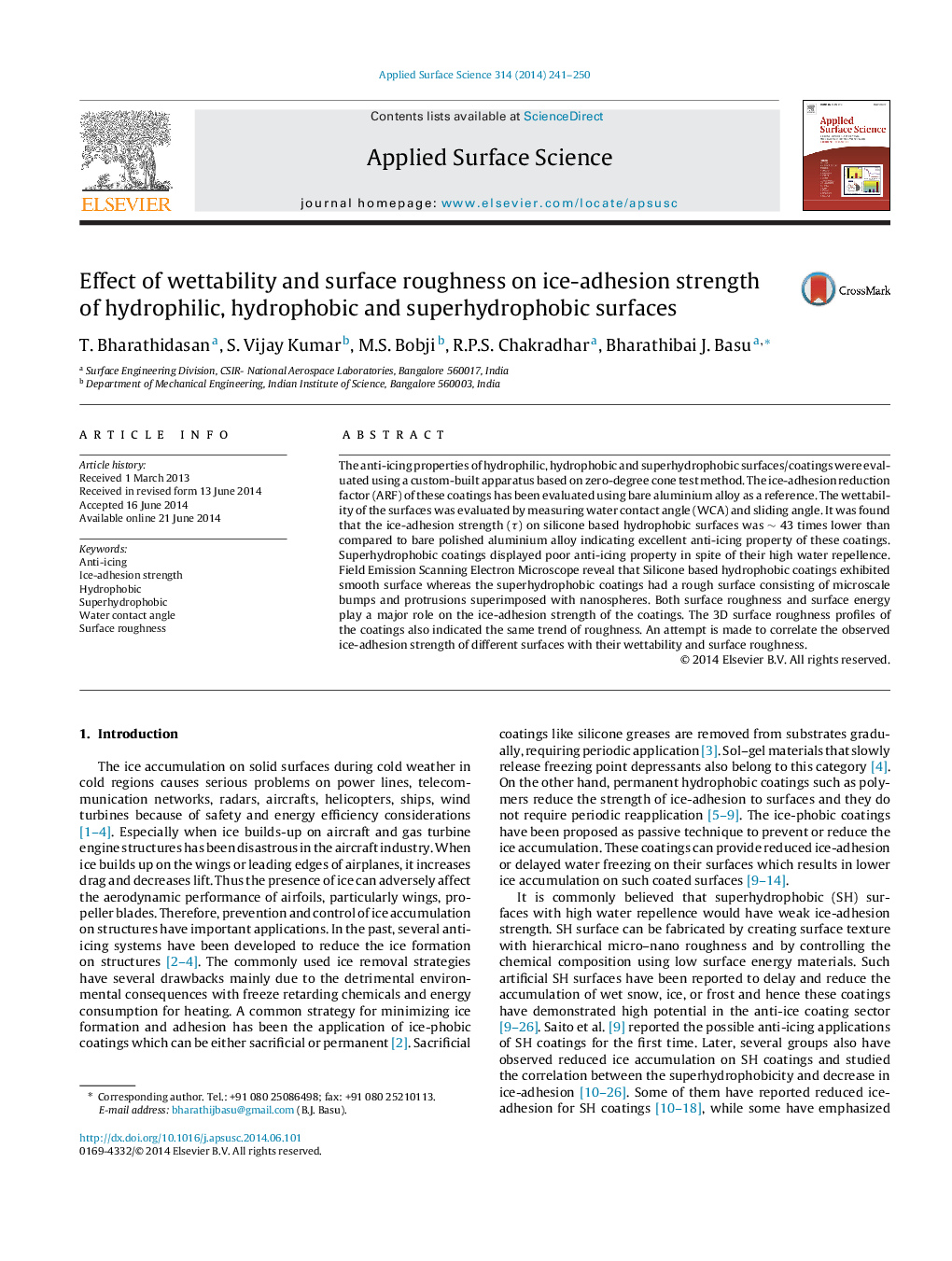| Article ID | Journal | Published Year | Pages | File Type |
|---|---|---|---|---|
| 5358355 | Applied Surface Science | 2014 | 10 Pages |
Abstract
The anti-icing properties of hydrophilic, hydrophobic and superhydrophobic surfaces/coatings were evaluated using a custom-built apparatus based on zero-degree cone test method. The ice-adhesion reduction factor (ARF) of these coatings has been evaluated using bare aluminium alloy as a reference. The wettability of the surfaces was evaluated by measuring water contact angle (WCA) and sliding angle. It was found that the ice-adhesion strength (Ï) on silicone based hydrophobic surfaces was â¼ 43 times lower than compared to bare polished aluminium alloy indicating excellent anti-icing property of these coatings. Superhydrophobic coatings displayed poor anti-icing property in spite of their high water repellence. Field Emission Scanning Electron Microscope reveal that Silicone based hydrophobic coatings exhibited smooth surface whereas the superhydrophobic coatings had a rough surface consisting of microscale bumps and protrusions superimposed with nanospheres. Both surface roughness and surface energy play a major role on the ice-adhesion strength of the coatings. The 3D surface roughness profiles of the coatings also indicated the same trend of roughness. An attempt is made to correlate the observed ice-adhesion strength of different surfaces with their wettability and surface roughness.
Related Topics
Physical Sciences and Engineering
Chemistry
Physical and Theoretical Chemistry
Authors
T. Bharathidasan, S. Vijay Kumar, M.S. Bobji, R.P.S. Chakradhar, Bharathibai J. Basu,
